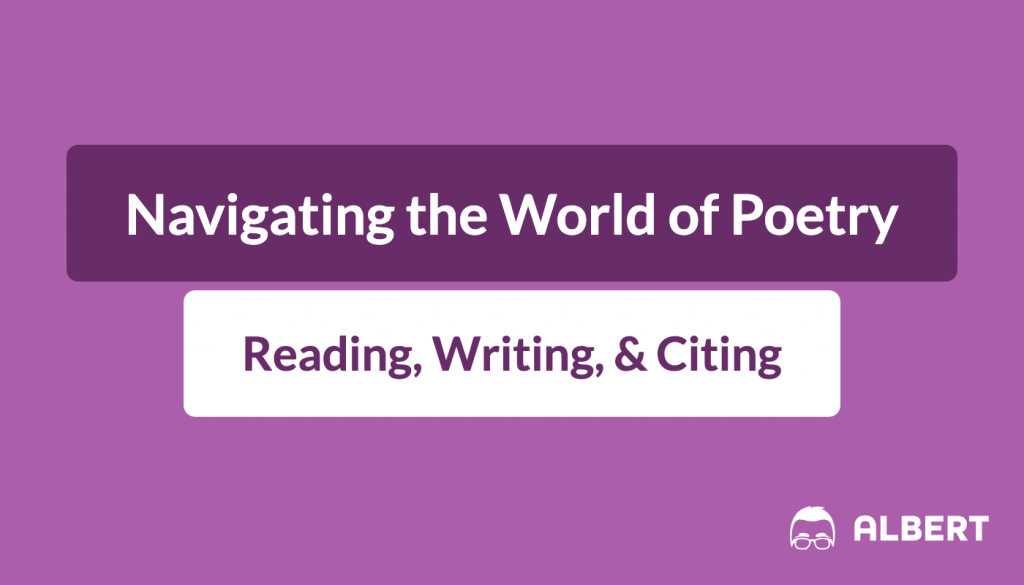What We Review
How to Write Poetry: Introduction to Understanding and Creating Poems
Poetry is not something that can be understood after a brief skim over. Rather, understanding poetry takes time and effort, and it often involves reading a poem several times to understand the various layers of meaning.
Therefore, knowing how to write poetry also takes time, and writers commonly plan or map out a poem before starting to write. This includes determining the message or theme that the writer wants to express.
Once a poet lands on a specific message or theme, they then consider the structure of the poem. What should the rhyme scheme and rhythm pattern be? Should the poem rhyme at all? How long should the poem be? What sort of poetic devices will best communicate the message to the reader?
Even after creating a first draft, most if not all poems then undertake a rigorous editing process with the intent of “tightening” the text; after all, poetry is about communicating encompassing ideas in a few, choice words.
Defining Poetry: Exploring the Essence of Poetic Expression
The Oxford Dictionary defines poetry as a “literary work in which special intensity is given to the expression of feelings and ideas by the use of distinctive style and rhythm”. While this is a fair poetry definition, it feels very rigid, while poetry, when read, lacks this feeling of rigidity.
Rather, within the confines of distinctive style and rhythm, poets are challenged to create something new and fresh, typically formed from unusual comparisons and imagery-rich descriptions in order to represent the message of the poem as intended.
How to Write Poetry: Tips and Techniques
When sitting down to write a poem for the first time, it is always beneficial to borrow poetic structures or rhyme schemes from other poems. This way, the form of the poem has already been decided for you and is one less hurdle to overcome. Consider the message you want to convey in your poem, and select the poetic structure and rhyme scheme that fits it best.

Formatting Poetry for Publication: Italics, Quotation Marks, and More
When typing a poem, it is important to follow the correct format. Poems do not need to go in the middle of a page; rather, they should sit flush with the left hand side margin of the page, 1” away from the edge of the paper.
Additionally, unless your teacher specifies otherwise, you should make your poems single-spaced. Use 12-point Times New Roman or similar font with 14-point font reserved for the title of the poem. Stanzas should be separated by double-spaced lines. Always be sure to check with your teacher or the publication’s guidelines for exact formatting.
Students may also think that each line of a poem should be a complete clause or phrase; this is also incorrect. Lines length should be determined by the rhythmic pattern and rhyme scheme of the poem. If a student is writing in free verse, words of special emphasis should be at the beginning, not end of lines.
Are Poems Italicized?
Many students ask whether or not poems are italicized. The name of the poem is never italicized since it is considered a short-form work. Only long-form works like books, movies, or magazines should be italicized.
Poems, magazine articles, web pages, or short stories are all placed in quotation marks rather than italicized in MLA format.
How to Cite a Poem: A Step-by-Step Guide
If you are writing a literary analysis, how do you cite a poem? When citing a poem from a book on a Works Cited page, a poem should be formatted like this:
Author of Poem’s Last Name, First Name. “Title of Poem.” Title of Book: Subtitle if Any, edited by Editor’s First Name Last Name, Edition if given and is not first, Publisher Name often shortened, Year of Publication, pp. Page Numbers of the Poem.
However, when listing a poem from a website on a Works Cited page, it should look more like this:
Author of Poem’s Last Name, First Name. “Title of Poem.” Website, Date of Publication, url. Accessed date.
For example, the website, Poetry Foundation, is an incredible resource for finding a multitude of poems. If you referenced the poem, “Ozymandias” by Percy Shelley in an essay, you would need to cite the author’s last name in the essay in an in-text citation (Shelley). Then, you would include a source citation on your Works Cited page like this:
Shelley, Percy Bysshe. “Ozymandias.” Poetry Foundation, 1 Jan. 1977, https://www.poetryfoundation.org/poems/46565/ozymandias. Accessed 6 Feb. 2024.

Discovering Resources: The Poetry Foundation and Poetry Publications
When searching for poems and poetry resources in addition to Albert.io’s wealth of information, Poetry Foundation is an incredible archive of over 40,000 poems and was founded by the American Poetry Association and stemming from Poetry magazine.
Explore Shakespeare is also a helpful resource specifically dedicated to Shakespeare’s works, including his sonnets. This resource has both a website and an app that students can download.
Additionally, your local city or school library usually has poetry books or books on poetry criticism available for loan.
Engaging with the Community: Poetry Contests and Events

There are also several different types of poetry contests. Sponsored by The Poetry Foundation, Poetry Out Loud is a nationwide poetry recitation contest for high school students. Students can select a poem from a comprehensive list to memorize and deliver before a panel of judges.
One of the largest written poetry contests is the National Poetry Competition. Even though this contest is based in the UK, submissions are accepted from around the world and there is a significant cash prize.
Conclusion: Embracing Poetry in Writing and Research
As stated before, reading and writing poetry are both daunting tasks, but poetry is an art form that is worth our attention. Reading poetry can engage your mind in several aspects at once given the layers of meaning embedded in a poem. Writing poetry can challenge us to write in a way that feels unfamiliar to us and ultimately strengthen our skills as writers.
If you want to explore more poems, check out Albert’s Poetry course! We offer practice questions with detailed explanations for over 50 poems to improve your enjoyment and understanding of poetry.








